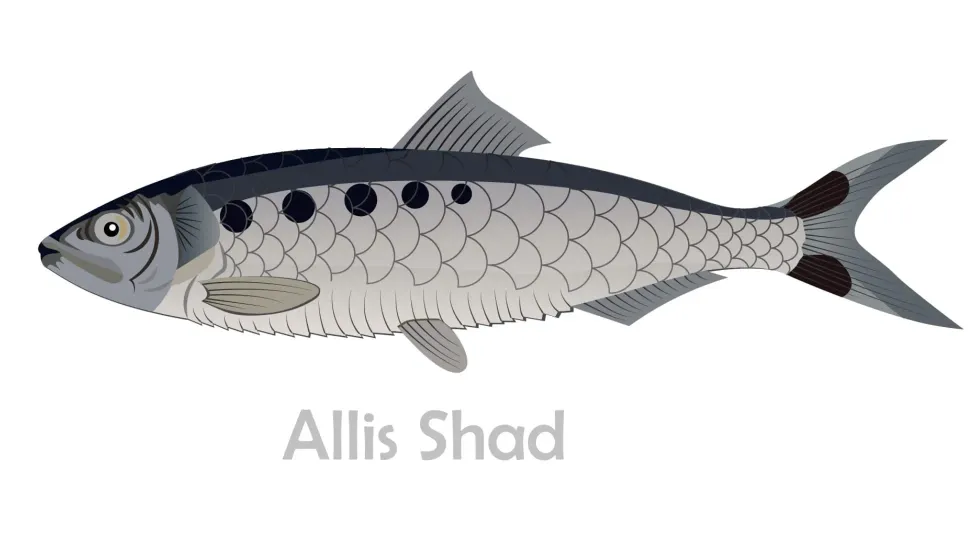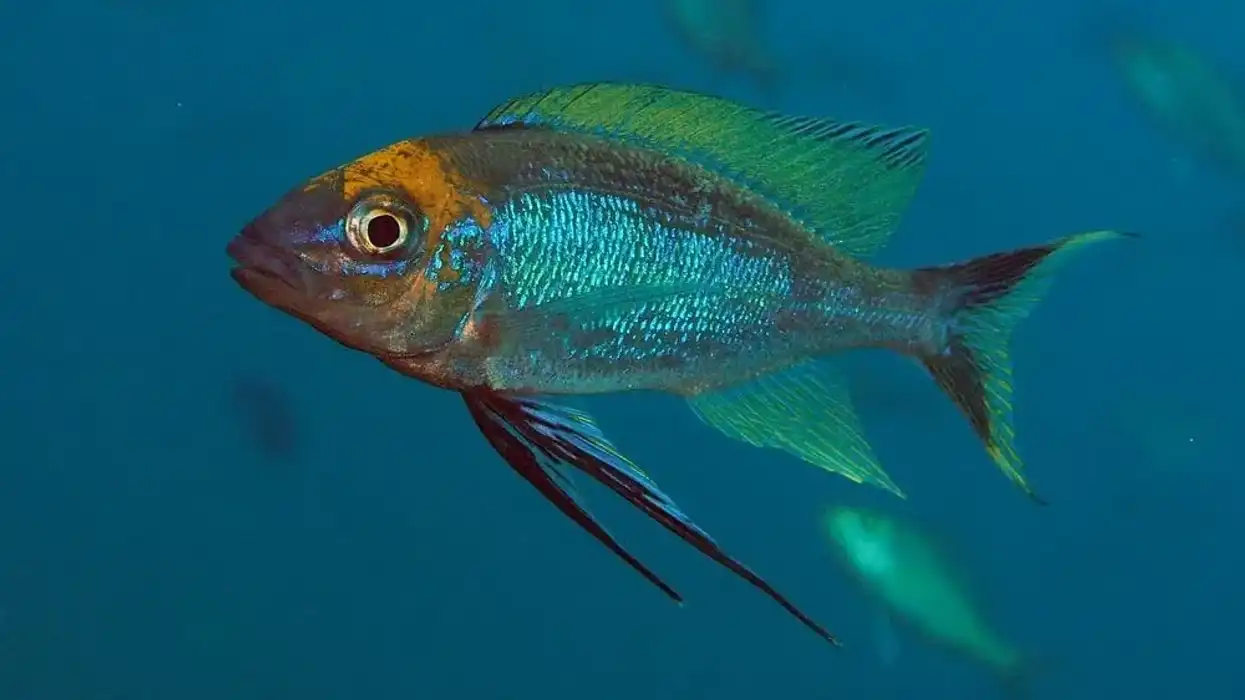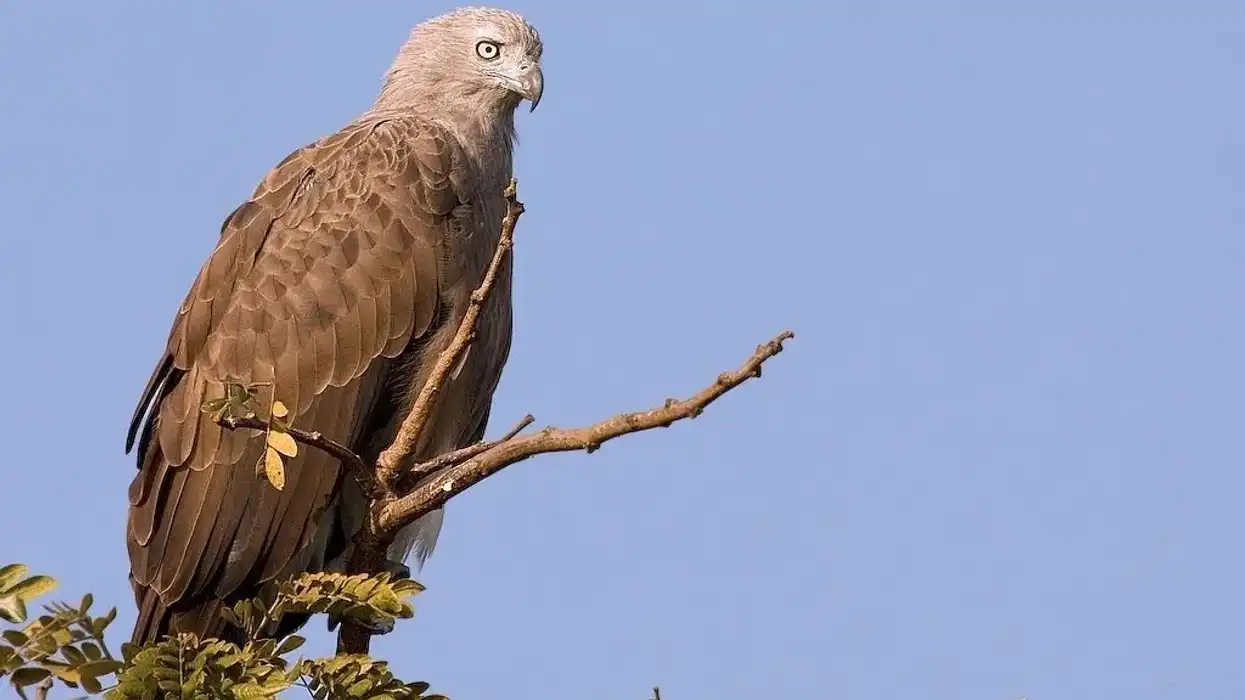Allis shad is a popular type of shad fish and is scientifically known as Alosa alosa. It exists in the deep sea waters of Europe and lives in a symbiotic relationship with another type of shad, twaite shad, Alosa fallax.
The two often interbreed to form hybrid species. People also tend to confuse the two, though twaite shad have fewer scales and gill rakers and are smaller in size than traditional allis shad.
The alosa allis shad migrate during the spawning season of May and June. They are also popular as 'May fish' for this very reason. They specifically search for freshwater and rivers to spawn during this season, as juveniles find it challenging to survive in deeper and saltier waters.
Allis shads are popularly used as a lure to catch bigger varieties during fishing. They look similar to herring fishes.
But they are characterized by their silvery front and brilliant bluish-green back. They are also known for their forked tail, single fin, and as many as 70-120 gill rakers. They are characterized by a dark spot behind the gill cover.
By the end of this article, you will know allis shad Spanish freshwater fish, allis shad location, allis shad classification, allis shad twiate shad hybrid, and allis shad scientific name. You may also check out the fact files on cuttlefish and clownfish from Kidadl.
Allis Shad Interesting Facts
What type of animal is an allis shad?
It is a marine animal.
What class of animal does an allis shad belong to?
It belongs to the Fish class.
How many allis shad are there in the world?
The exact number is unknown. However, there is concern about its reducing numbers (due to overfishing), making it a protected species in Ireland.
Where does an allis shad live?
It lives in the deep sea and the ocean.
What is an allis shad's habitat?
Allis shad (Alosa alosa) live in the deep sea as adults. They are particularly resistant to warm water.
So they may migrate to cooler waters during the summer months if the water temperature rises above a certain level. They also migrate in May/June to spawn. For this, they look for spawning sites near freshwater estuaries, and riverbanks.
The adult females intentionally lay eggs in these shallow waters, as juveniles will otherwise find it challenging to survive in salter and deeper waters. They begin to swim into deeper waters when they turn one year old.
Who does allis shad live with?
Allis shad (Alosa alosa) live in a group, also called a shoal. They are often confused with twaite shad Alosa fallax, another shad species. Both species live together in a mutually beneficial relationship called 'sympatry'.
In some cases, they also mate among these two species to produce hybrid varieties. They are not commonly used as fish pets. On the other hand, they may be used as bait to catch bigger species of whales and fish.
How long does an allis shad live?
The lifespan of allis shad is found to be four to nine years.
How do they reproduce?
The male species in allis shad (Alosa alosa) achieve maturity by the ages of three to nine years. The female specimens are bigger (growing up to 70 cm in some cases) and thus take a year longer to mature.
They reproduce during May/ June and are hence known as May shad. For this, they find freshwater rivers to spawn, as juvenile specimens find it difficult to survive if the water is too salty or deep.
They spawn mostly during the night, releasing sperm and eggs into the water as they thrash about with their fins. They swim back to deeper waters after spawning. Both males are females are known to reproduce only once in their lifetime.
The released eggs are fertilized in rivers and sink to the river's bottom for protection. Here, they hatch within four to eight days of release. The juvenile allis shad stay in freshwater for 6-12 months and then begin to swim to deeper and saltier water areas.
What is their conservation status?
The official conservation status is Least Concern. However, there are concerns about dropping numbers of this species, due to the threats of river pollution, over-fishing, and increasing salt levels in brackish water.
The Ireland government has accordingly reserved several 'spawning sites' for this species. This is to encourage reproduction and interbreeding between the two shad species - allis shad (Alosa alosa) and twaite shad (Alosa fallax).
This is in line with Appendix III of the Bern Convention, 1979, listing protected flora and fauna. This is also being adopted in several parts of Europe where this species is currently found.
Allis Shad Fun Facts
What do allis shad look like?
Allis shad have a silvery front with mid-sized scales and a bluish-green back. They are characterized by a dark spot behind their gill cover. They are often confused with twaite shad as they may look the same from a distance.
But the allis shad species have more scales (70+) and gill rakers (90+) than the twaite shad (also called twaite shad Alosa fallax). Allis shad are also bigger, growing up to 5 lb (2 kg). On the other hand, the twaite shad weigh under 2 lb (1 kg).

*Please note this is an image of Alosa mediocris, not Alosa alosa. If you have an image of an allis shad, do get in touch with us at hello@kidadl.com
How cute are they?
This species is not the cutest of animals. They are hardly ever adopted as pets, as mature fishes tend to live in the deep sea. However, they are enticing enough to be used as lures and bait to catch bigger fish.
How do they communicate?
They communicate through olfactory cues.
How big is an allis shad?
Allis shad can grow twice as big as the other type of popular shad, twaite shad, Alosa fallax.
How fast can an allis shad swim?
This is variable. Juvenile specimens of this fish only start to travel deeper into the rivers when they turn 6-12 months old. On the other hand, adult specimens live comfortably in the deep sea. They can travel thousands of miles within a day or a week to reach spawning sites during the breeding season of May-June.
How much does an allis shad weigh?
This is a small-sized fish, weighing 1-4 lb (0.5-2 kg).
What are the male and female names of the species?
Both have the same name, allis shad (Alosa alosa). But the female species is bigger.
What would you call a baby allis shad?
Baby allis shad is called a fry.
What do they eat?
They are carnivorous. When they are under a year old, they survive on plankton and other smaller invertebrates.
As they turn older, they feed on a range of marine crustaceans and smaller varieties of fish. They are also consumed by bigger fishes in the sea, like the Blue Catfish. For this reason, the shad species are often used as lures during fishing.
Are they eaten by humans?
They are sometimes eaten by humans. They are primarily used as bait to catch fish.
Would they make a good pet?
They are not conventionally used as pets, as adult allis shad are more comfortable living in the deep, salty sea.
Did you know...
Allis shad are known for the rapid speed with which they swim. For a small species, they can surprisingly cover thousands of miles in just one night if required, to find spawning sites or to find cooler waters during summer.
How many gills does an allis shad have?
The average allis shad fish can have 70-gill rakers (comb-like structures that are used to filter zooplankton), while bigger specimens can have 120-gill rakers.
Allis Shad In The 19th Century
Allis Shad has a rich past in various parts of Europe. In the 19th century, they were considered as valuable as salmon, making up one-third of all fishing catches.
This was due to their high availability in the estuary of the River Severn, and in various other parts of Europe (including Germany, Norway, the U.K., west of Wales, British Isles). They were gleefully consumed in large quantities, which over time have led to dwindling numbers.
This has also been due to river population and heavy overfishing in Britain, Scotland, and Ireland. Today, allis shad are used as lures to catch bigger fish in the sea.
Here at Kidadl, we have carefully created lots of interesting family-friendly animal facts for everyone to discover! Learn more about some other fish including chum salmon, or bowfin.
You can even occupy yourself at home by drawing one on our allis shad coloring pages.









